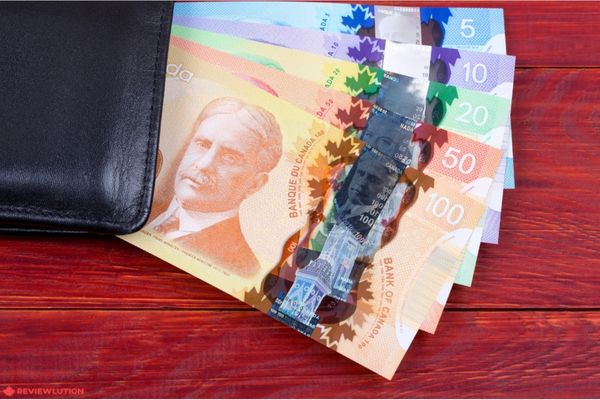Canada RIT Deposit: What Is It and How Do You Get It?
Imagine you open your bank account only to be greeted with surprise money labelled “Canada RIT“. Exciting stuff, right? But where did it come from? Why did you get it when you haven’t applied for anything? Well, say goodbye to all your questions because we’re here to explain what the Canada RIT deposit is, who is eligible, and advise you on how to spend it.
Without further ado, let’s get into it!
What Is the Canada RIT Deposit?
Before we start explaining the premise of this direct deposit, let’s go over what it means. RIT is a payment from the Canada Revenue Agency (CRA), standing for “Return of Income Tax”, and resulting from an assessment of your tax return. Sometimes, it is also called a RIF payment, although the acronyms don’t denote any differences.
But why do some Canadians get it, while others don’t? It mainly has to do with the money you paid for taxes. So if you’ve received a Canada RIT/RIF deposit, it means you’ve paid too much in income taxes. The deposit usually hits your account shortly after you’ve filed your taxes.
However, sometimes you might not receive your deposit with your tax returns. Instead, your funds will arrive at an unexpected time, thus the nickname “surprise money”. In such cases, it likely means that the CRA has reassessed your taxes and has sent you a Notice of Reassessment. Usually, you can find your notice in the mail or via the CRA My Account.
As with all tax refunds in Canada, the RIT deposit is not taxable, so you won’t have to include it when filing your upcoming tax returns.
Furthermore, it’s essential to note that Canada RIT payments have no regular payment dates. In general, you can expect your refund within two weeks of filing your returns following online payments. For paper returns, the wait time may extend to eight weeks. It mainly depends on when the CRA has finished assessing our reassessing your tax returns.
Accordingly, there is no number of times you can receive your RIT/RIF. So, you should expect to receive a lump sum once a year after filing your taxes. In cases of reassessment, you may also receive an amount following the procedure.
Eligibility Requirements
The Canada RIT is available to both taxpaying individuals and businesses. In fact, many small businesses received the direct deposit in 2016 as a way to reduce the Employment Insurance premiums companies had to pay. For individuals, we know that some have received the Climate Action Incentive (CAI) which was under the label “Canada RIT/RIF.”
However, even if you don’t have employment income to report, you should still file an income tax and benefit return because the government assesses many federal and provincial benefits using your annual tax filing, like the GST/HST Tax credit and the Canada Child Benefits (CCB).
How Much Will I Receive?
Unfortunately, there isn’t a definitive answer to this question. The best we can do is – it depends. Some taxpayers may get a few hundred dollars, while others receive a few thousand. Usually, it depends on what the refund relates to and whether the CRA reassessed your tax returns for a few years. Currently, the average tax refund in Canada is $1,954.
How to Spend Your Canada RIT Deposit?
If your initial reaction to your unexpected deposit is to recklessly spend it on an unnecessary item you’ve been eyeing, stop and think for a while. Fortunately, there are far better ways to spend your RIT in Canada and make the most out of your refund.
First and foremost, you pay down your debts! Even though the money you receive probably won’t be enough to cover everything, every dollar will help inch you closer to freedom. Alternatively, you can invest your money into your retirement account by contributing to your or your spouse’s RRSP.
However, if that’s not an option for you, you can also consider putting the money in a TFSA or RRSP, which will help you save up long term. Many people might choose to save the money for a down payment on a home or to top up their emergency funds. Finally, you can look into paying for comprehensive health or life insurance. The possibilities are endless!
Conclusion
We hope this article has helped clear up any questions you may have had about the Canada RIT. Remember, if you are eligible, you can use the money for multiple purposes, depending on your spending habits and general outlook on life. Best of luck with whatever you decide to do with your surprise money!
FAQ
If you see the label Canada RIT in your bank account, it means that the Canada Revenue Agency (CRA) has sent you a tax refund on your tax filings and has estimated that you have overpaid in income taxes. Since this is a refund, the amount you receive from the RIT is not taxable.
The Canada RIT deposit is a direct deposit sent by the CRA to taxpaying Canadian individuals and businesses after they have filed their taxes. Usually, this means that you’ve overpaid income taxes. The amount you receive depends on several factors, including what the refund relates to and whether your tax returns have been reassessed for a few years.











